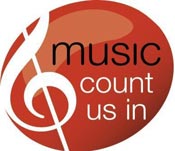
School Facilities: Western Australia
The Community Use of School Facilities resource is designed to support access to school facilities by community groups and activities.
Information about Department of Education schools in Western Australia
General Policy
Read the full policy statement
School facilities and resources must be made available for use by the community, TAFEWA colleges and any other potential users.
Principals must not permit activities which are inconsistent with the educational aims of the school or which interfere with its operations.
Applications for use of school facilities and resources must be approved by the Principal and formalised through a written agreement signed by the school Principal and a representative of the user group.
Principals will consult with School Councils to establish the schedule of fees or charges to be applied for the hire or use of school facilities and resources.
Principles
Schools are encouraged to inform the community about the facilities that they have available for use. Potential users will need to know the nature of the facility, the benefits it can offer and how the facility can meet specific needs as a community based learning (and recreation) centre.
a) Collaborative relationships between schools and the community are to be encouraged.
b) The utilisation of school facilities by community groups and educational providers is a legitimate and reasonable use of publicly funded facilities, enabling schools to better meet community expectations.
BER Halls
For specific information about facilities built under the Building the Education Revolution (BER) program, click here. To find out whether a primary school near you has a BER hall, click here for a list of Primary Schools for the 21st Century projects in Western Australia.
Types & Length of Agreements
Principals are authorised to enter into licences with a two year maximum duration.
Licences must be reviewed and/or renegotiated at the end of this time.
Licences over two years but up to five years must be signed by the Minister. The Minister has the option to renew the licence once or more than once and each not exceeding five years.
Restrictions
Comply with any request by the Principal and with all laws and departmental policy concerning the use of the Premises and Equipment including, without limitation, regulations which prohibit smoking on the Premises and laws relating to the sale or consumption of alcohol.
Insurance
Determining the level of insurance cover which is adequate or reasonable is not an exact science, as it is difficult to foresee every risk or even which could potentially generate a liability claim.
To assist your assessment of the potential exposure you may wish to consider the use of the property in terms of either active or passive. The nature and number of the various activities are many and the examples given here act as a guide only.
Passive
$5 million public liability insurance. Example: speech on school premises, craft bee on school premises.
Active
$10 million public liability insurance. Example: cricket match; football training; swimming
An individual applicant must sign a licence as a representative of his/her group and be responsible for ensuring compliance with the conditions of hire.
Incorporated groups and commercial users must show evidence of insurance cover and where possible, users are to be incorporated bodies.
High risk activities (eg. vigorous and challenging physical activities such as abseiling) must not be allowed without proof of insurance being provided.
Risk Assessments
No information provided
Fees and Charges
Cost components of the fees could include power consumption, water, cleaning, insurance, administration, additional wear and tear and the use of specific items of equipment. As a minimum requirement, fees should at least meet the additional recurrent operating costs incurred through use of the facilities and resources.
Further additional fees may be levied after the use of the facility. For example, a fee would apply where additional cleaning is necessary, or when security or other personnel are called out to secure the school buildings because the user has failed to lock up the premises or re-set an alarm system. When setting a fee, account should be taken of the following factors:
- value of the activity to the community and school;
- nature of the intended use, including degree of wear and tear on the facility and/or use of equipment and resources;
- access times required;
- set up and restoration time;
- opening and closing fees;
- size of the user group;
- capacity of user to pay;
- storage of special equipment;
- comparability of fees charged by other providers within the local community;
- any additional administrative staff time which may be necessary; and category of user, eg commercial or charitable.
- In addition, professional development to assist schools and community members in organising wider community use of facilities may be made available, and it is strongly advised that schools consider this cost in determining fees.
More Information
Guidelines for Community Participation in Decision-Making within the Department of Education and Training (PDF) http://det.wa.edu.au/policies/detcms/policy-planning-and-accountability/policies-framework/guidelines/guidelines-for-community-participation-in-decision-making-within-the-department-of-education-and-training.en?oid=com.arsdigita.cms.contenttypes.guideline-id-3743160
Related Department of Education Policies
Financial Management in Schools: Finance and Accounting
Smoking in the Workplace
Alcohol on School Premises
Risk Management with the Department of Education and Training Portfolio:
Policy, Procedures and Guidelines
Departmental Insurance Covers –RiskCover Fund Guidelines
Occupational Safety and Health
School Security
Working With Children Checks
< Community Use of School Facilities

![]() This is part of the School-Community Links Project, an initiative of the Music in Communities Network and Music: Count Us In.
This is part of the School-Community Links Project, an initiative of the Music in Communities Network and Music: Count Us In.



















